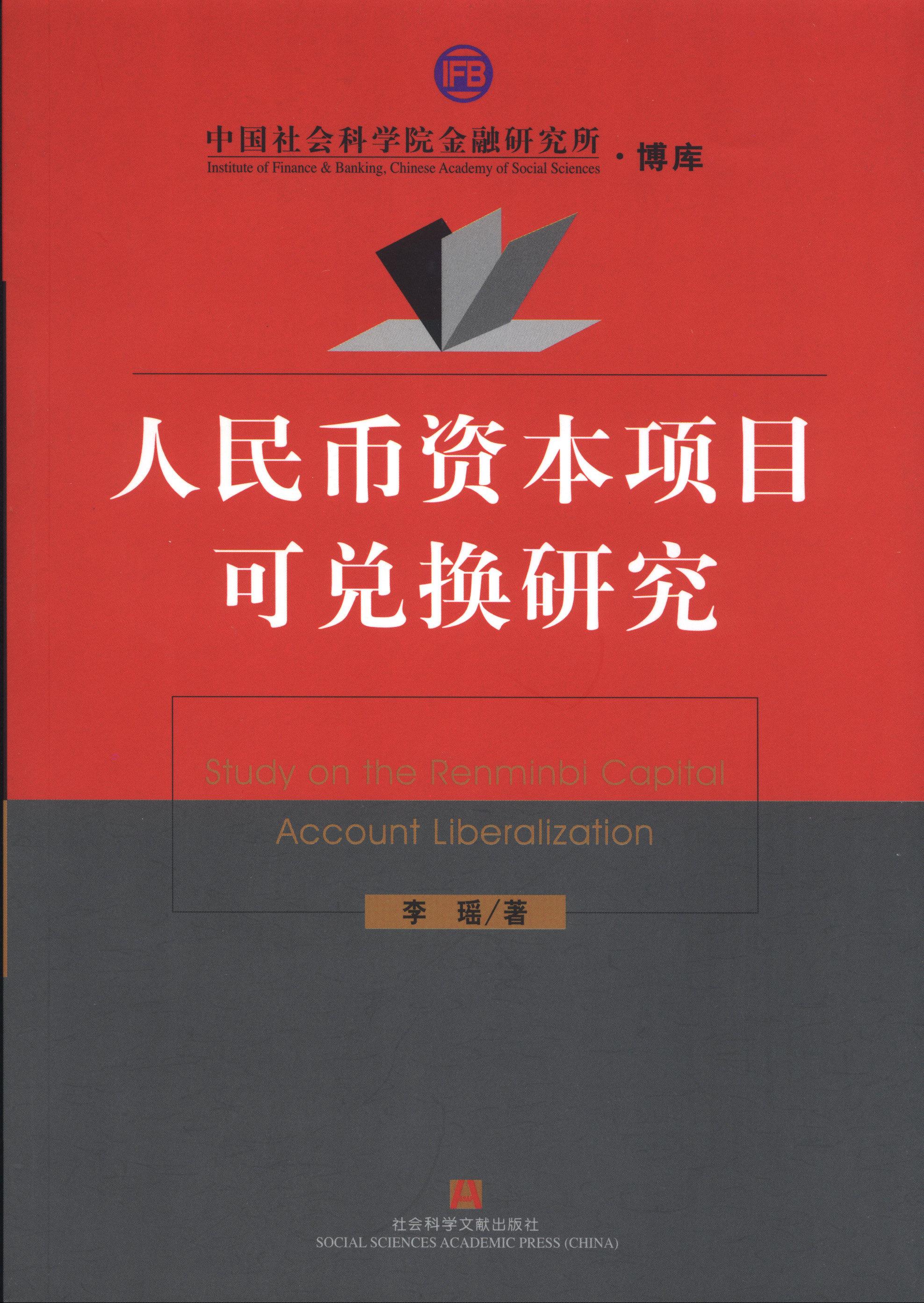
李瑶,女,清华大学经济管理学院博士。现供职于国家外汇管理局经常项目管理司。
本书共有十一章,可分为以下三部分内容:
第一部分由第一章至第四章组成,这一部分对本书研究的目的、研究基础、研究思路与方法以及本书结构安排进行了简要介绍,对有关资本项目可兑换的概念进行了界定。
同时,我们在检索了既有理论的基础上,探讨了有关国际资本流动与资本项目可兑换的理论渊源,资本项目可兑换理论产生的历史背景,全球化对资本流动的影响,目前国际社会关注的热点问题及理论异议,以及资本项目可兑换的利弊分析。本书从自身研究的角度,将国内有关资本项目可兑换的不同观点进行了归类分析,这些有关资本项目可兑换理论和观点的探讨,为我国人民币资本项目可兑换模式与进程研究奠定了理论和实践基础。
接着,本书重点分析了国际资本项目可兑换的现状,用比较分析的方法对发达国家、转轨国家、发展中国家等9个不同类型国家资本项目可兑换案例的特征进行了详细分析和总结,并通过讨论资本项目可兑换进程与宏观经济、经济危机、货币政策等作用关系的案例,获得了有益的启迪。
第二部分包括第五章至第七章的内容。第五章首先通过对我国人民币可兑换历史发展阶段、可兑换现状以及资本流动和资本管制特征的分析,认为目前我国已实现人民币资本项目部分可兑换,随着我国对外开放政策力度的逐渐加大,必将为我国经济逐渐融入世界经济大循环提供新的机遇,也对我国资本流动的监控和管理带来新的挑战。接着, 客观务实地分析了我国目前资本项目管理效率损失的原因,如手续繁杂、管理机制不合理、对资本项目子项的监管效率不高、只注意引进外资的规模而忽视了质量和结构,等等。最后,在资本项目可兑换前提条件的基础上,分析了人民币资本项目可兑换的内外部环境,认为在内在动力及外部推动力的作用下,我国必将进一步推动人民币资本项目可兑换的进程。本章对人民币资本项目可兑换现状的客观认识,将对我国在现有基础上制定资本项目进一步开放的战略与模式选择有着重要的现实意义。
第六章论述了货币的国际度与资本项目可兑换的关系。分析了国际货币国家与非国际货币国家在资本项目可兑换约束条件上的巨大差异,并详细阐述了这一差异对两类不同性质的国家在推进资本项目可兑换时所面临影响的非对称性。为此,我们引入了货币国际度的概念,构造了货币国际度的指数体系。为了考察人民币国际度水平,我们以美元、日元、欧元为例,结合人民币境外流通现状,进行了实证比较分析。得出的结论是:人民币在周边国家虽有流通,但依然是非国际货币,先天的无奈决定了无奈的后天,我们的最佳选择是渐进式开放。但相对众多弱势非国际货币国家而言,人民币境外流通有助于加快其国际化步伐,并且我们又面临着加快资本项目可兑换进程难得的历史机遇。有关非国际货币和货币国际度的创新性研究,将为人民币资本项目可兑换的模式选择和过程决策提供重要的理论依据。
第七章分析了人民币汇率与资本项目可兑换的关系问题。我国近25年来有关汇率的一系列改革,使得人民币汇率与进出口贸易和资本流动的关系日益密切。因此人民币汇率的现状及走势、人民币汇率的形成机制,人民币汇率对我国资本项目可兑换有何影响,都是人们十分关心的问题。由于现在经济问题的相关性和复杂性越来越强,经济全球化进程也进一步强化了这种复杂性。所以,人民币的汇率机制既关涉中央银行的宏观调控与保障能力,也需要整个金融体制的稳定与完善,还需要时时考虑国内外经济形势的走向。从长远的观点来看,盯住美元的汇率制度应当适时调整,但是,资本项目可兑换进程更需要一个相对稳定的汇率机制。否则,放开了的资本项目可兑换市场,将由于不断面临巨大的汇率风险而不得不重新关闭。
第三部分内容主要是提出了我国资本项目可兑换的模式及进程、相关的政策建议、有关我国资本项目可兑换的风险防范及后续研究的方向。在上述分析的基础上,我们提出了均衡—权变开放模式及理论依据,通过上述分析,我们得出了“我国目前正置资金供给的黄金时期,应最大程度地提高资金的使用效率,并通过合理利用资金达到国内外资源的优化配置,取得经济效益最大化”的结论。为此,本书提出了人民币资本项目输入输出的“均衡—权变”开放模式。这一模式的指导思想可概括为:相机抉择、出入均衡、适时开放、遇险即收。
均衡权变模式的确定,除借鉴国际以及中国成功的渐进式开放经验外,还基于本书五方面的理论创新基础:一是一国资本项目可兑换程度取决于非国际货币的天然约束以及货币国际度的定位;二是一国资本项目可兑换的程度应充分考虑一国资金存量、结构以及输入输出均衡的状况;三是一国在推进资本项目可兑换的进程中应考虑国内经济基础与国际环境影响程度,国际经济摩擦函数在开放模式中具有一定的分析价值;四是对外投资乘数效应,对一国经济发展有重要的促进作用;五是资本项目既不能盲目开放,也不能消极等待,一国资本项目不可能长期管制,否则不仅造成资本管制成本与效率的严重不匹配,还将贻误国际资源优化配置的时机。
在这一基础上,本书提出了人民币资本项目可兑换的战略目标和构想;并相应提出了开放的六项原则;接着,我们探讨了人民币资本项目可兑换的进程步骤与制度安排;最后,我们对推进人民币资本项目可兑换进程中可能面临的风险因素进行了详细分析,在充分借鉴国际防范金融风险的理论和方法的基础上,设计了资本跨境流动风险预警管理框架,并针对各种风险因素提出了防范风险的具体措施。
Abstract
With economic and financial globalization and the emergence of capital inflows and outflows after
The methodology of the dissertation is to combine theoretical innovation and actual practice, international experience and domestic situation, and theoretical analysis and empirical study. Then, based on the review and comparison of existing theories, the dissertation examines the special restriction posed by a non-internationalised currency, and the degree of international acceptance of a currency, on Renminbi capital account liberalization. Finally, the staggered target and the sequencing of capital account liberalization using a equilibrium-contingency opening model are put forward.
The innovative ideas of the dissertation are:
(1)Discovering the great difference in the restricting conditions on capital account liberalization between a country with an internationalized currency on the one hand, and a country with a non-internationalized currency on the other. The asymmetric effect of this difference is also analized in the process of capital account opening of in these two types of countries.
(2)Proposing the concept of the degree of international acceptance and a related index system. Meanwhile, US$, Japanese Yen, Euro and Renminbi were chosen as an empirical study in order to illustrate the concept. The theory of the degree of international acceptance currency could be regarded as an important contribution to the study of approach and sequence for
(3)Putting forward the equilibrium-contingency model and its theoretical foundation for the liberalization of capital account in
(4)Introducing staggered target and the sequence for the pace of capital account liberalization on the basis of the equilibrium-contingency opening model and following the principles of caution, equilibrium and contingency. Moreover, the dissertation analyses the different risks in the process of capital account liberalization are analyzed and proposes a risk early-warning system and specific measures on risk prevention.
Conclusion: Based on the analysis of capital equilibrium and the improvement of
the degree of acceptance of Renminbi as an international currency and the existing
stage of capital account opening, equilibrium-contingency model could be the pragmatic approach to further promote capital account liberalization in
Key words: Renminbi, liberalization of capital account, internationalization of the currency, equilibrium-contingency model.
目录
第一章 绪论
1.1本书研究背景
1.2资本项目可兑换有关概念界定
1.3本书研究思路与方法
1.4本书结构安排与主要内容
第二章 资本项目可兑换理论基础
2.1理论渊源及历史背景
2.2对资本项目管制与放开的探讨
第三章 资本项目可兑换的国际借鉴
3.1不同国家资本项目可兑换的状况与特征
3.2对于重新管制现象与危机现象的思考
3.3资本项目可兑换对宏观经济与制度的要求
第四章 资本流动与可兑换问题的争鸣
4.1全球资本流动趋势与市场特征
4.2资本项目可兑换的利弊分析
4.3国际资本项目可兑换对中国的启示
第五章 人民币资本项目可兑换现状与环境分析
5.1人民币可兑换的历史沿革
5.2人民币可兑换现状与特征
5.3人民币资本项目可兑换的特征分析
5.4人民币资本项目可兑换的条件与环境
第六章 货币的国际度与资本项目可兑换
6.1非国际货币对资本项目可兑换的约束
6.2货币国际度的实证分析
6.3货币国际度与人民币资本项目可兑换
第七章 人民币汇率与资本项目可兑换
7.1人民币汇率决定及其影响
7.2汇率模式选择及其约束
7.3人民币汇率与资本项目的关系
第八章 资本流动均衡与人民币资本项目可兑换
8.1资本项目均衡管理与资金均衡模型
8.2经济摩擦与资本流入流出均衡管理
第九章 人民币资本项目可兑换进程与对策研究
9.1“均衡—权变”开放模式的选择
9.2“均衡—权变”开放模式的总体战略构想
9.3人民币资本项目可兑换的进程与对策
第十章 人民币资本项目可兑换风险控制体系
10.1人民币资本项目可兑换进程中的风险管理
10.2资本流动风险管理措施
10.3人民币资本项目可兑换进程中的影响因素
第十一章 结论
11.1本书研究的主要结论
11.2后续研究的方向
参考文献
Contents
Chapter one Introduction
1.1 Research background
1.2 Conceptions of capital account liberalization
1.3 Methodology of this book
1.4 Structure and main content of this book
Chapter two Theories of capital account liberalization
2.1 The history of the theories
2.2 Study on the control and opening of capital account
Chapter three International experience of capital account liberalization
3.1 Country cases on capital account liberalization
3.2 Cases on re-control and risks
3.3 Requests on macro-economy and system
Chapter four Argument on capital flow and convertibility
4.1 Trends and characters of international capital flow
4.2 Analysis on advantages and disadvantages
4.3 Revelation for
Chapter five Analysis on status and condition of RMB capital account liberalization
5.1 History of RMB capital account liberalization
5.2 Status and characters of RMB capital account liberalization
5.3 Characteristic analysis on RMB convertibility
5.4 Conditions and surroundings of RMB convertibility
Chapter six Degree of international acceptance of currency and capital account liberalization
6.1 Restriction on capital account liberalization by non-international currency
6.2 Case study of the degree of international acceptance of currency
6.3 Degree of international acceptance of currency and RMB capital account liberalization
Chapter seven RMB exchange rate and capital account liberalization
7.1 Determination and influence of RMB exchange rate
7.2 Pattern choice and restriction
7.3 RMB exchange rate and capital account
Chapter eight Capital flow equilibrium and RMB capital account liberalization
8.1 Capital account equilibrium management and capital equilibrium models
8.2 Economic friction and capital inflow-and-outflow equilibrium management
Chapter nine Process and policy suggestions of RMB capital account liberalization
9.1 Choice of equilibrium-expediency opening model
9.2 Whole stratagem of equilibrium-expediency opening model
9.3 Process and policy suggestions of RMB capital account liberalization
Chapter ten Risk control system of RMB capital account liberalization
10.1 Risk management in process of RMB capital account liberalization
10.2 Risk management on capital flow
10.3 Influence in RMB capital account liberalization process
Chapter eleven Conclusion
11.1 Conclusion
11.2 Direction of further study
Reference

